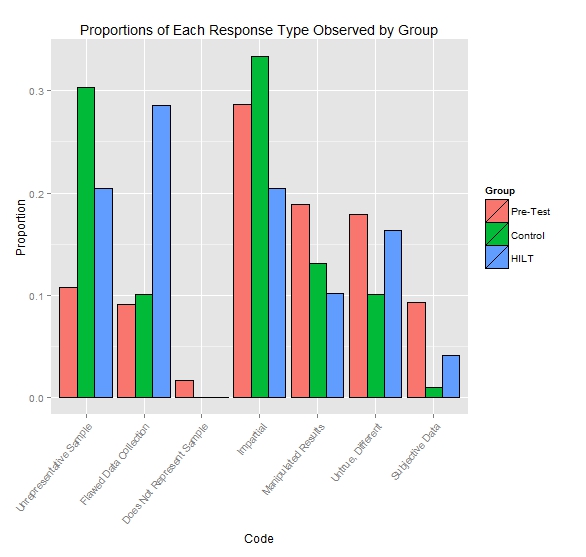Bias
Overview
In general, we find that students tend to confuse bias in an everyday sense (unfair favoring based on opinions) with bias in a strict statistical sense (problems with samples or results based on experimental design including survey writing and sample collection). Research shows that this confusion is very frequently not resolved even after a student has completed an introductory course.
Student Notions
When presented with a prompt such as: "The researcher said that the data were biased. What does biased mean in this context?", student responses have been summarized into the following categories (in this case, categories are exclusive):
- Statistical Notions
- Sample is not representative; statistic calculation results in systematic differences from parameter
- Problems with experimental design or randomness (vague)
- Data does not represent sample (incorrect)
- Colloquial Notions
- Skewed; one-sided or leaning in one direction; favoring a group based on opinion
- Manipulated; Following researcher's intent or preconception
- Not symmetric (confusion with skew)
- Untrue, incorrect
- Subjective data, data based on opinions

Activities
The following HILT activities have been designed to address student misconceptions regarding "Bias" and have research that suggests they improve student learning:

|
| Distorted Distributions |
